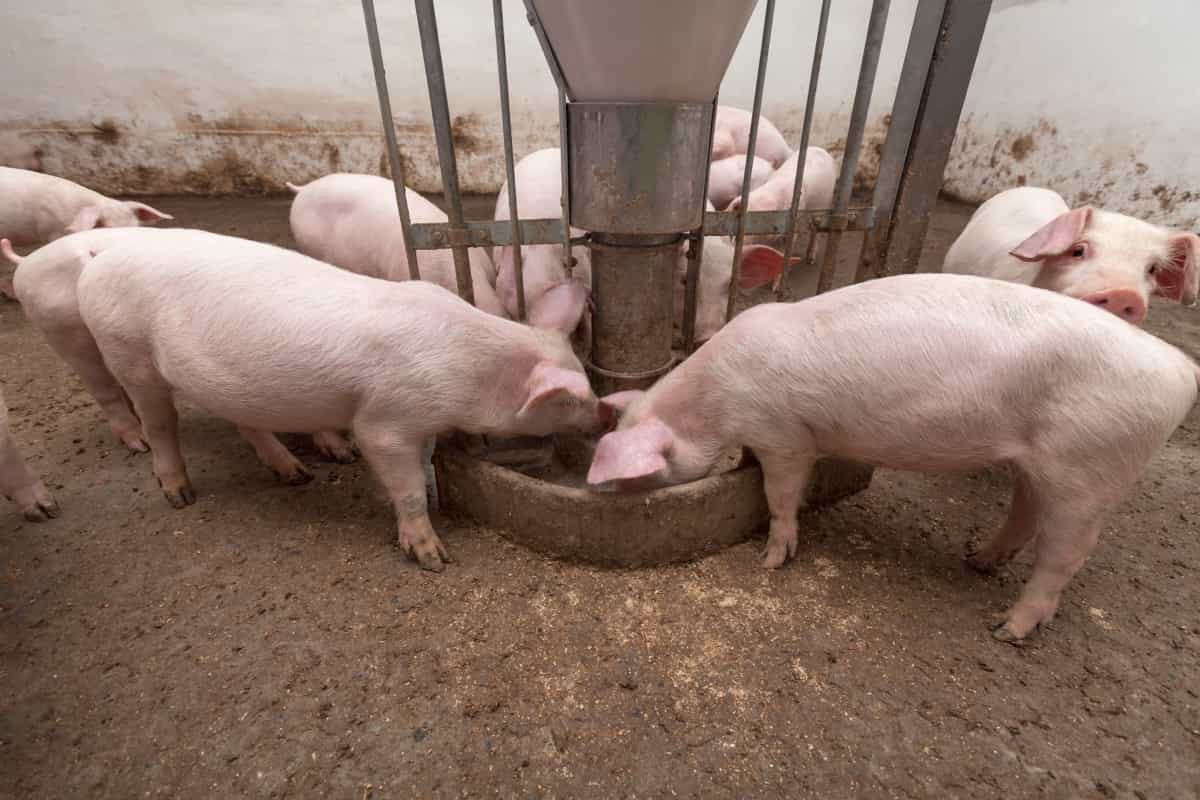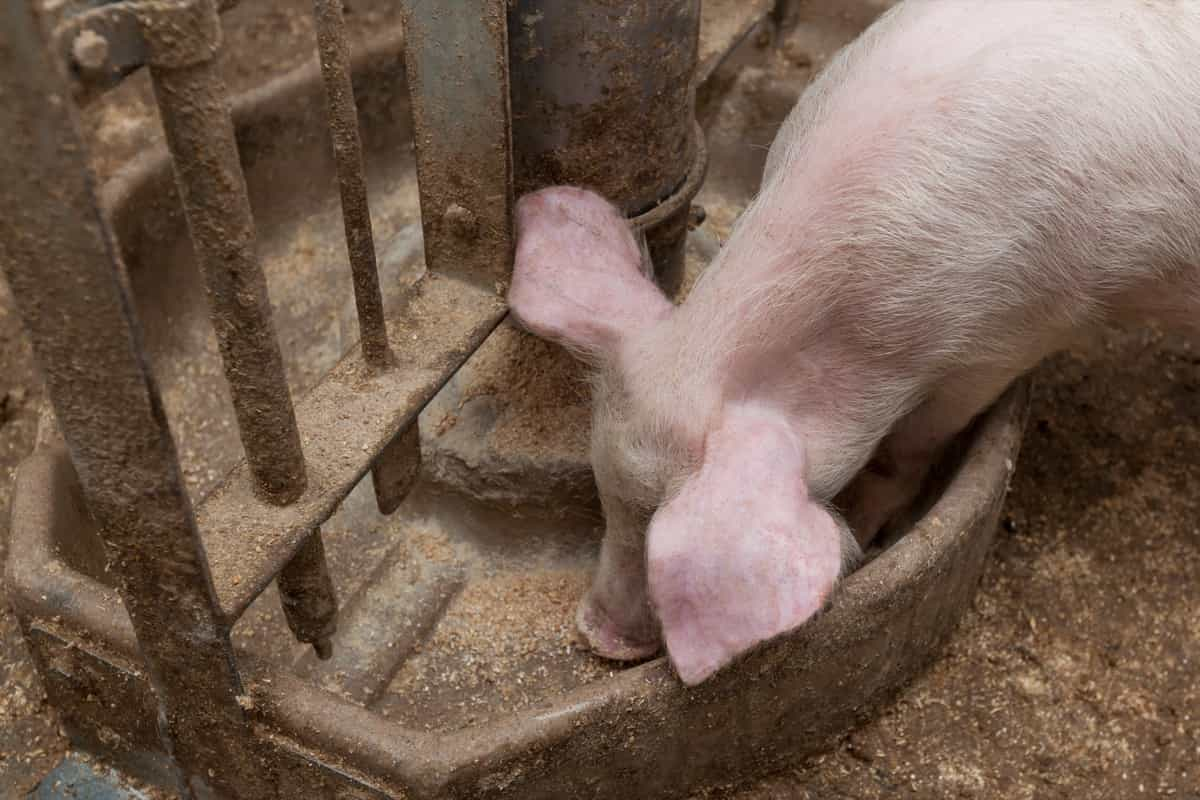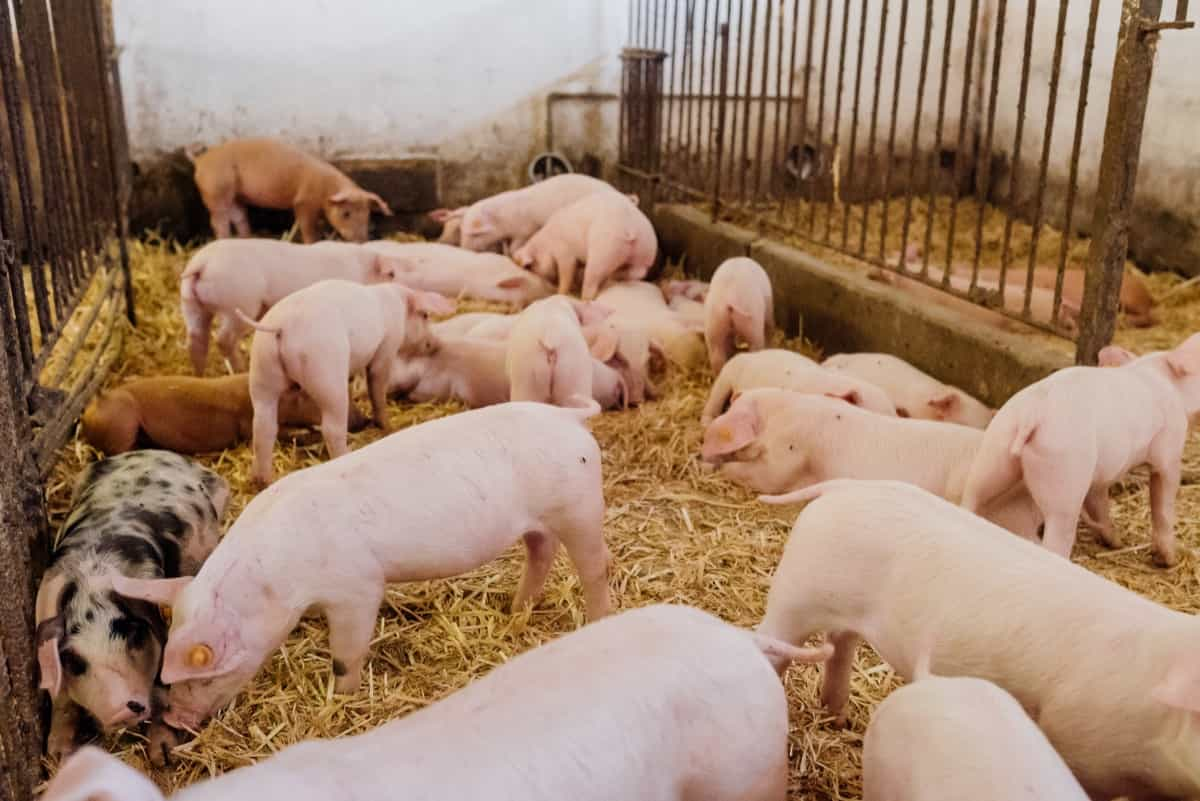The Landrace pig is one of your safest bets for growing or developing a business based on pig breeds. As a result of the lean meat and very little fat produced by these pigs, producers prefer Landrace pigs as they can produce a wide range of other products from their meat, such as bacon and pork carcasses.

Landrace Pig Facts
Origin & History of Landrace Pig Breed
Denmark is the origin of the Landrace pig. Under strict control and supervision of the Danish government, several tests and breedings were conducted over several years to create this breed. Landrace pigs were successfully developed between 1850 and 1907 by breeding some local breeds with English ones, like the Great White and Middle White.
With the popularity of the Landrace pig breed, Denmark became the leading exporter of bacon in the world because of its success. Specifically, they focused on producing the English’s favorite bacon, Wiltshire bacon. Until the Second World War, the Danes refused to export this live pig breed due to this enormous success. A USDA proposal to lift restrictions on propagating purebred Landraces in America led to the end of restrictions on importing live Landrace pigs from Denmark.
Landrace Pig Breeds
There are more than 20 Landrace pig breeds, but some are more common and popular than others, such as the American Landrace pig, the British Landrace pig, and the Danish Landrace pig.
American Landrace Pigs
American Landrace pigs are the first descendants of Danish Landrace pigs. As a result of Denmark’s decision in 1939 to export 24 live pigs for research, the cross-breed was developed in America. Its appearance consists of white skin, a long horizontal torso, 16 or 17 ribs, and big, long ears that drop.
British Landrace Pigs
The British Landrace pig is the most popular in the United Kingdom, especially in the East and Yorkshire. A dozen Landrace pigs were brought from Scandinavia to the United Kingdom in 1949, which led to the breed’s creation. These pigs have long bodies, small heads, long, heavy ears, and white skin. They are bred and raised for pork and bacon. The British Landrace pig is believed to be a unique breed of pig. The breed became unique by adding new bloodlines from Finland and Norway to the British Landrace breed in 1980.
Danish Landrace Pigs
Danish Landrace pigs are the original breed from which all others are descended. Its body is long with a slightly arched back, long and bent ears, a small head, and a long snout. This breed has two different skin colors: white and piebald.
Landrace Pig Characteristics
- There is a gender difference in Landrace pig size, with the female being smaller than the male. It ranges from 160 to 180 cm for males and 158 to 170 cm for females.
- During the different stages of pig development, Landrace piglets reach a weight of 18-20 kg at two months, 100 kg by 195 days of age, and 210-230 kg as a female and 226-318 kg as a male as an adult.
- In terms of appearance, the Landrace pig is white, and some might even say white pink, with white, very fine hair.
- Landrace pigs are also characterized by their small heads, slender bodies, large and bent ears, and well-developed muscles.
- In addition, it has a long torso and limbs that are suitable in height for supporting his body weight.
- Landrace pigs are capable of producing 13-14 piglets per birth. Sows will show signs of fetal movement 4-5 days before birth, and their genital organs will swell 7-8 hours before birth.
In case you missed it: Chester White Pig Facts: Origin, Size, Physical Characteristics, Pros, and Cons

Advantages of Rearing Landrace Pig Breed
- The Landrace pig breed crosses well with other breeds. In other words, Landrace pigs can be mated with other kinds of pigs to produce different breeds.
- In addition to being able to cross with other breeds, Landrace sows are prolific breeders and produce large pigs. Therefore, you can expect many baby pigs to fill your farm quickly.
- There is also a reputation for the long body length of Landrace pig breeds. This results in a high percentage of carcass weight in hams and loins.
- The Landrace pig breed is known for its fast growth rate. Therefore, they mature faster than many other breeds.
- Landrace pigs are known for their high milk production rate, one of their major advantages. To feed their litter, landrace sows produce a lot of milk.
- Additionally, Landrace sows are good mothers and produce lots of milk. The way they take care of their piglets is amazing. When the sows reach their peak milk production in five weeks, they will continue to feed their piglets milk.
- Unlike many other pig breeds, this breed does not produce piglets that are smaller than it is. Landraces produce large piglets.
- You will definitely enjoy keeping a Landrace pig as a pet if you are a pet lover. A Landrace is smart and picks things up fast. They are social and enjoy interacting with others. Furthermore, they are sweet and loving.
- Landraces produce lots of litter, which you can sell for profit. Additionally, the meat can be butchered and sold. Making more money is also possible by selling their manure to crop farmers.
Disadvantages of Rearing Landrace Pig Breed
- Maintenance conditions are important to them. It is preferable for them if the environment is clean and the temperature is moderate and constant. In the absence of these conditions, they may become sick. Having a temperature below 20°C, for example, can cause pneumonia.
- Their diet must be strictly controlled.
- The rear feet are especially susceptible to foot diseases. Despite their short legs, their massive bodies put much pressure on them.
In case you missed it: Yorkshire Pig Facts: Origin, Size, Physical Characteristics, Pros, and Cons

Conclusion
Landrace pigs are a good choice if you want to start a pig farm since they are easy to raise, not too demanding, and have increased productivity. The meat of Landrace pigs is known for its superior quality and low-fat content. Furthermore, meat production is good. The weight of a carcass can yield around 75% of its meat.
- Feed Your Flock for Less: Top 10 Tips to Save on Chicken Feed
- Ultimate Guide to Ossabaw Island Hog: Breeding, Raising, Diet, and Care
- Hatching Answers: The Top 10 Reasons Your Chickens Aren’t Laying Eggs
- Eggs and Economics: Breaking Down the Cost of Raising Backyard Chickens
- Defend Your Greens: Proven Methods to Keep Iguanas Out of Your Garden
- Ultimate Guide to Cinnamon Queen Chicken: A Comprehensive Guide for Beginners
- Ultimate Guide to California Tan Chicken: Breeding, Raising, Diet, Egg-Production and Care
- Ultimate Guide to Marsh Daisy Chicken: Breeding, Raising, Diet, and Care
- 10 Types of Chicken Farming Businesses You Can Start for Profits